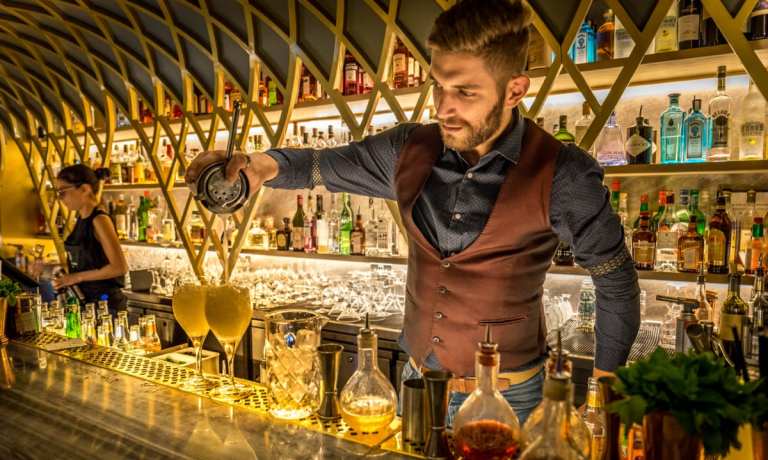The Alcohol Industry Brews Efficiency From The Chaos Of Regulation-Influenced B2B Payments

B2B commerce in the alcoholic beverages arena across the U.S. and Canada is a complex and multifaceted landscape. Buyers range from small restaurants to large retailers and government liquor stores, while on the supplier side, there are wineries, distilleries, boutique breweries and more. In between, there is a patchwork of payment strategies dictated by varying regulations.
Understanding those regulation-fueled nuances, from bottle deposits to tax requirements, is critical to running a successful operation in the industry, but players in the middle market have historically relied upon custom ERPs or out-of-the-box, generic portals not meant to address the particular challenges of the alcoholic beverages industry, according to Ryan Wilson, founder and CEO of Ollie Order. The result is many businesses are forced to take a manual approach to B2B payments and other workflows.
“This manual work,” Wilson told PYMNTS in a recent interview, “takes organizational resources away from value-added activities, like being a tastemaker and coming up with the next hazy IPA.”
Based in Canada, Ollie Order must keep regulations in mind when connecting buyers and sellers and facilitating B2B transactions within its portal. Yet, having recently announced a buyout by Next Glass, Ollie Order is expanding in the U.S. market and planning to address an even wider scope of payments and regulatory complexities.
Hectic B2B Relationships
In British Columbia, about a decade ago, Wilson recalled that buyers in the alcoholic beverages arena typically procured products from just one or two suppliers, including government-owned vendors or industry-leading wholesalers.
Today, that vendor choice has exploded thanks to consumers’ drive for independent, craft breweries, wineries and distilleries, with a preference for local businesses.
“On the private liquor store side, we’re finding the average liquor store was ordering from 500 different vendors a week,” Wilson said. “That’s 500 different ordering processes and 500 invoicing processes. And generally, none of this was digital.”
B2B buyers have often turned to texting, calling and emailing sales reps, or even using fax machines or Instagram direct messages to place orders. It also meant manually filling out 500 credit card authorization forms sent to vendors that would store card details within insecure spreadsheets.
In buyers’ back offices, meanwhile, there are personnel entirely dedicated to keeping track of which day of the week which supplier accepts orders and which communication method is preferred for which seller.
Regulation-Driven B2B Payments
Creating a digital marketplace for buyers and sellers in the alcoholic beverages industry to connect and transact can help mitigate much of these pain points, but for that platform to gain traction and find success, it must understand the various B2B payment methods that are preferred — and, more importantly, that are compliant, depending on the market.
In British Columbia, as Wilson explained, suppliers are not legally allowed to sell on trade credit and must collect payment at the time of delivery, meaning the industry there “has almost exclusively adopted a credit card” for B2B payments.
A spectrum exists of suppliers that either adhere to those rules or choose to ignore them and bill clients after delivery, though the majority of vendors charge the customer as the order is placed.
The U.S., meanwhile, varies depending on the state, with Wilson acknowledging that regulations tend to be more closely followed south of the border.
Regardless of B2B payment method or timing, there is an opportunity to inject digitization and automation within the ecosystem of a marketplace portal. Further, in markets in which selling trade credit is not permitted, businesses are allowed to draw from existing credit or financing lines from their banks to pay for alcohol.
“With that in mind, I think there’s an opportunity to provide an ecosystem of financial services to the industry” embedded within a digital marketplace, Wilson noted.
Easing The Chaos
With a younger generation of restauranteurs, craft brewers and distillers, and other participants in the market, the industry is quickly pressing for greater automation, efficiency and ease of use as both buyers and sellers expect their B2B interactions to be as seamless as they are in the business-to-consumer (B2C) world.
Even so, Wilson said, the industry, which has so long relied on spreadsheets and manual processes, cannot make widespread change overnight.
As Ollie Order expands in the U.S., Wilson said the firm will continue to discuss the industry’s biggest pain points with regulators, buyers and sellers to identify the best strategy of facilitating B2B payments. And while phone, email and text communication and ordering workflows will likely endure, Wilson said he is confident that change is on the horizon.
“When this digital generation is looking at one vendor who offers them an online store [that] they can shop from 24 hours a day from their mobile phone, click ‘buy,’ and not have to shuffle a check or credit card authorization form, they’re going to take the path of least resistance,” he said. “There’s a slow drip that accelerates exponentially into a wave of people changing their buying habits.”